GemGeek
Pearlista
Looks like crystallized honey. Yeah, a hint might help! 
I believe you refer to the apparently-cancerous shell formations found by another gentleman in NZ (posted here and published in Pearl World), among the last published studies of Dr. Grahame Brown of the Australian Gemmological Association.?since you have first told the story of how those little pearls happen.
Any links of particular interest would be greatly appreciated!?nacre formation has been investigated to death?(same as Nautilus and for similar reasons - i.e. anything BUT pearl formation).
Looks like a piece of coral
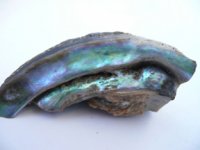
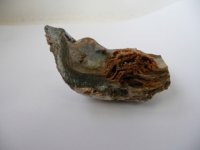
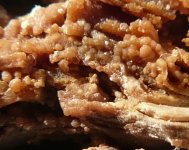
Yes these formations are precisely as studied by Dr. Brown, discovered and presented by Mr. Lou Hill. I seem to recall from reading the report that the affected shells were collected along a particular stretch of beach, and that such shell clusters were considered by Dr. Brown to be a rare anomaly?one he had not seen prior to Lou's discovery.
Given the wealth of conveniently (read: relatively affordable) small freeform abs in NZ Natural Pearl's inventory, might we assume that there are alternate mechanisms in play?
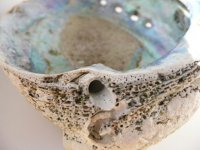
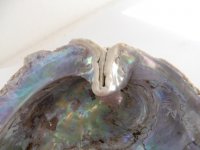
By alternate mechanisms, I mean the creation of the small freeforms that offer such enhanced versatility for jewelry application. Do these smaller pearls uniquely originate in shell cluster formations or are they also found randomly?Yes, we had lots of conversations with Dr Graeme Brown before his
death, a very knowlegable man. These shells can be found anywhere
along our coasts. No Steve, there wont be any alternate mechanisms
in play - TOO HARD and the nacre is never as good as the natural
nacre of a natural pearl.
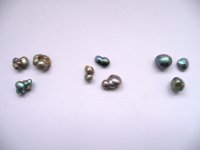
The level of understanding and appreciation for freeform abs must have just blasted into orbit?The rare accident occurs when the borer penetrates the inner shell.At this point, foreign bodies are released and are immediately entombed in calcite and this is the basis of freeform natural abalone pearls. Most of these entombed nucleus are discarded. Some get attached to the shell and are embedded. Some of them attach themselves to the foot area (shell base muscle attachment). They either form clusters, doubles or stay singular. (photo attached) As the nacre lays up on these pearls, they show signs of becoming baroque in shape. We think this is due to the nature of the abalone as we have observed thousands of pearls and have discovered that:-smaller pearls are rounder larger pearls to be more baroque in shape.
The level of understanding and appreciation for freeform abs must have just blasted into orbit…
